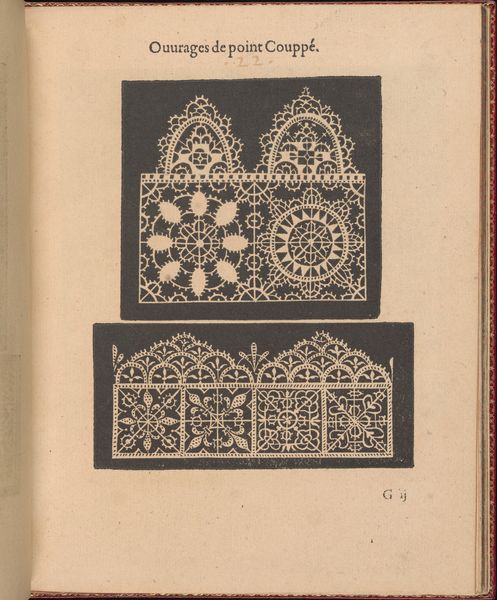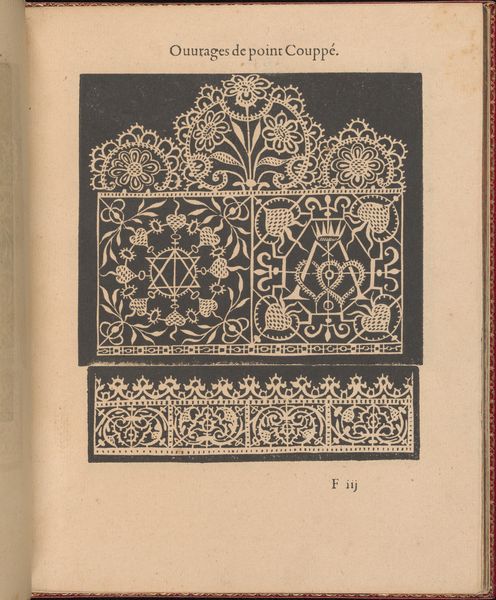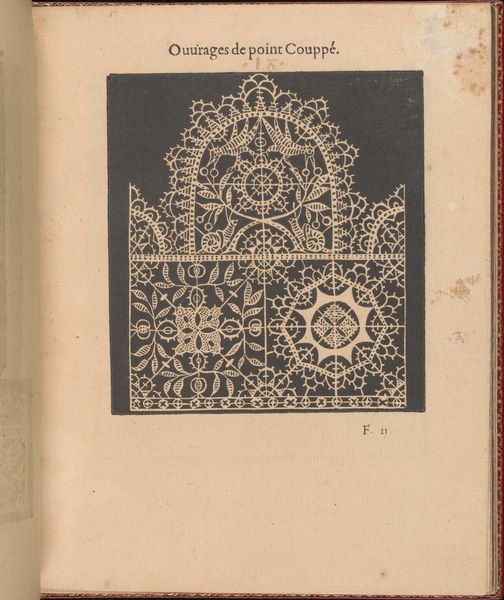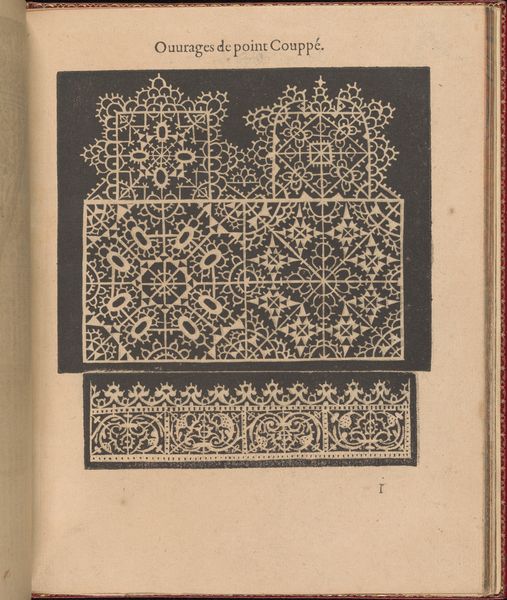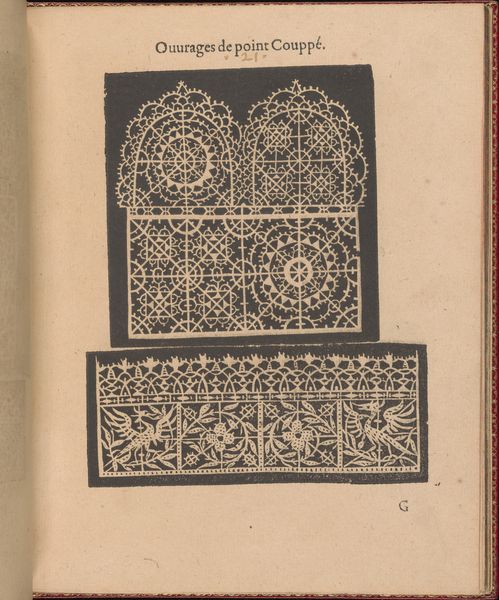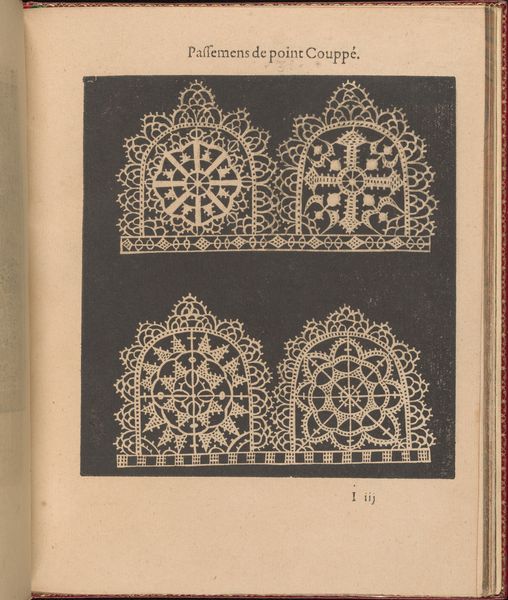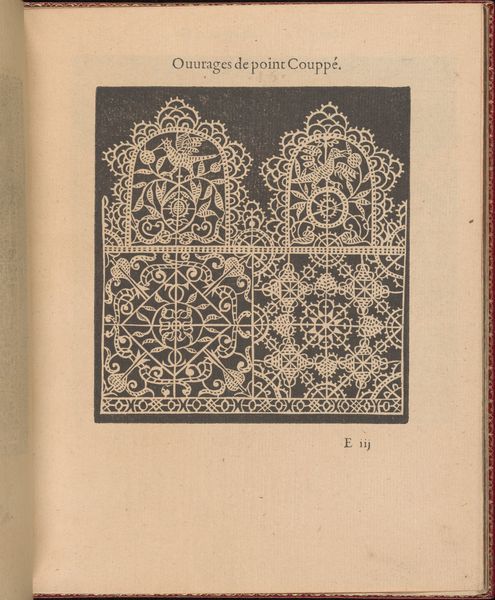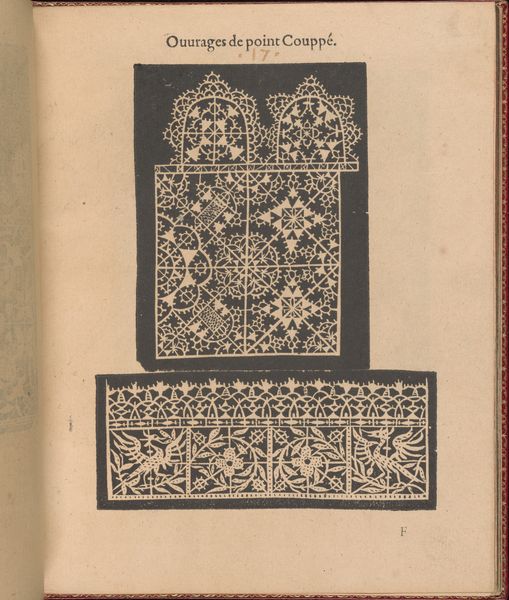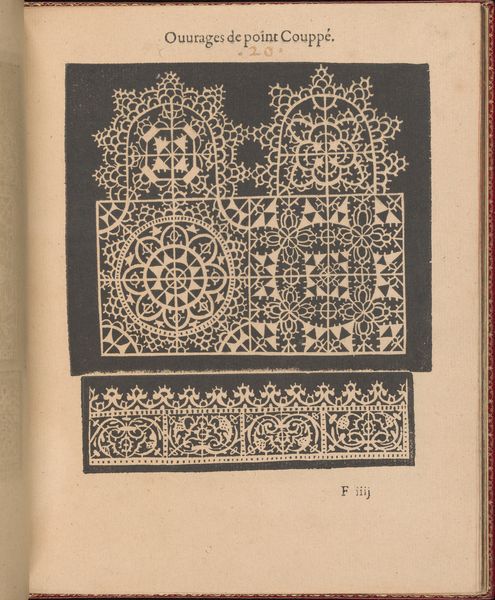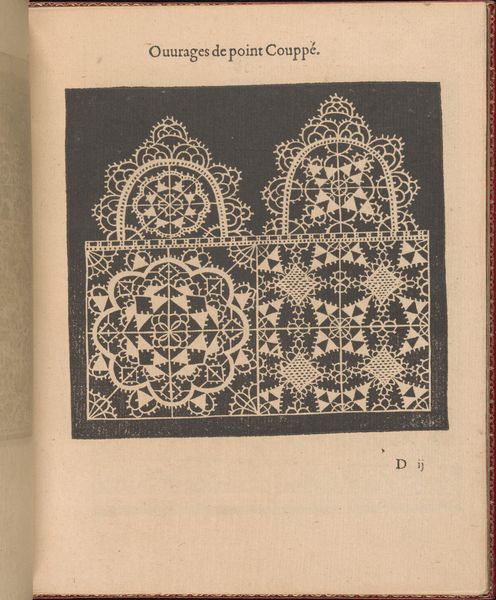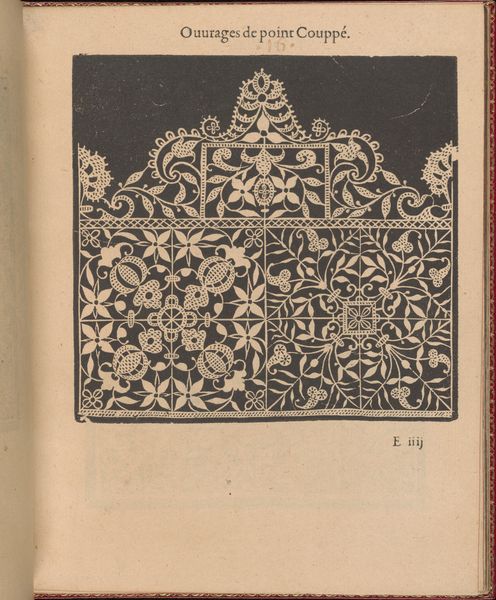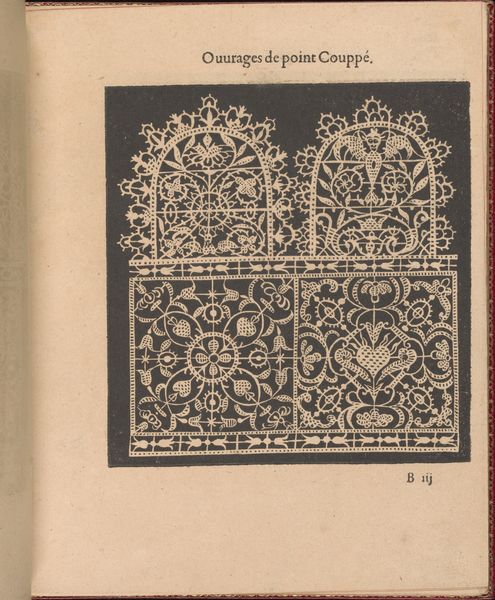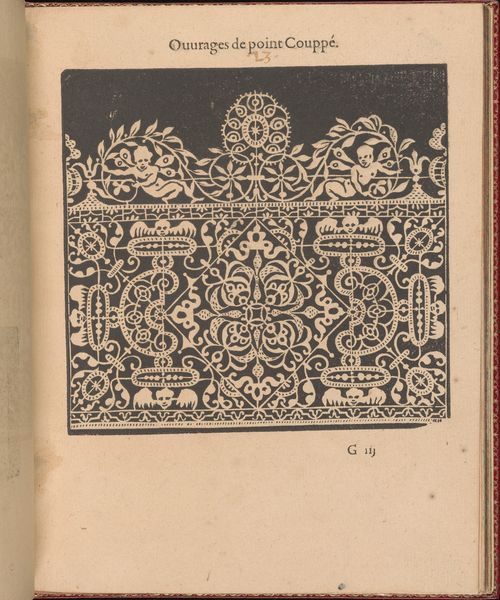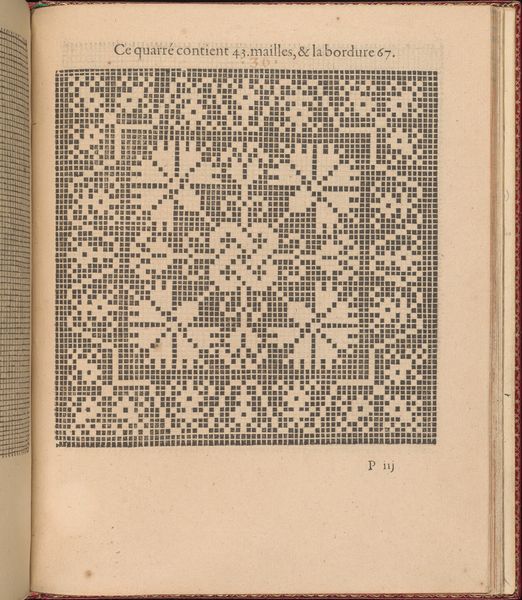
Les Singuliers et Nouveaux Portraicts... page 37 (recto) 1588
0:00
0:00
drawing, print, paper, ink
#
drawing
# print
#
paper
#
11_renaissance
#
ink
#
geometric
#
decorative-art
Dimensions: Overall: 8 1/16 x 6 5/16 in. (20.5 x 16 cm)
Copyright: Public Domain
Curator: Today we're looking at a page from Federico de Vinciolo’s "Les Singuliers et Nouveaux Portraicts…" printed in 1588. It's an ink drawing and print on paper. Editor: Whoa, these geometric patterns are intense! It's like peering into a meticulously designed maze or some kind of bizarre textile blueprint. All those perfectly repeated motifs...it almost has a hypnotic effect. Curator: Vinciolo’s pattern books like this one were hugely influential in spreading needle lace techniques across Europe during the late 16th century. They played a key role in enabling a burgeoning industry of highly skilled women creating elaborate handmade adornments for the wealthy elite. These designs weren’t just patterns, they represented a very specific kind of labour. Editor: Absolutely, I can see these designs blowing up someone's Insta feed today – a cool mix of math and creativity. I’m just imagining someone turning these into a cross-stitch pattern or a temporary tattoo even. But what did "nouveaux" mean back then, anyway? Curator: That's a really interesting question. The “new” refers to how Vinciolo broke from existing pattern traditions. The older styles had emphasized figurative imagery in the lace but Vinciolo pioneered geometric and abstract shapes that integrated with architectural trends. So novelty wasn't about discarding the old as much as re-interpreting it. The very medium, needle lace, held connotations to gender, class, and social aspirations for both producers and consumers. Editor: Right. So, like today's streetwear or those avant-garde haute couture shows! Fashion always mirrors societal currents in its own quirky way. It's almost like lace was early social media. The designs spoke about class and taste, it was the aesthetic signaling of its time. Curator: Precisely! And it’s so compelling how even these seemingly straightforward patterns became a battleground over control and aesthetics. Even within the constraints of producing essentially luxury goods, women exercised skills. It speaks to an intriguing moment where creative expression intersected socio-economic constraints, a tension that continues today. Editor: Yes! Makes me want to design my own lace inspired piece now with all these complex historical-socio patterns layering beneath the surface! Thanks for unpacking so many new facets of this book today!
Comments
No comments
Be the first to comment and join the conversation on the ultimate creative platform.
